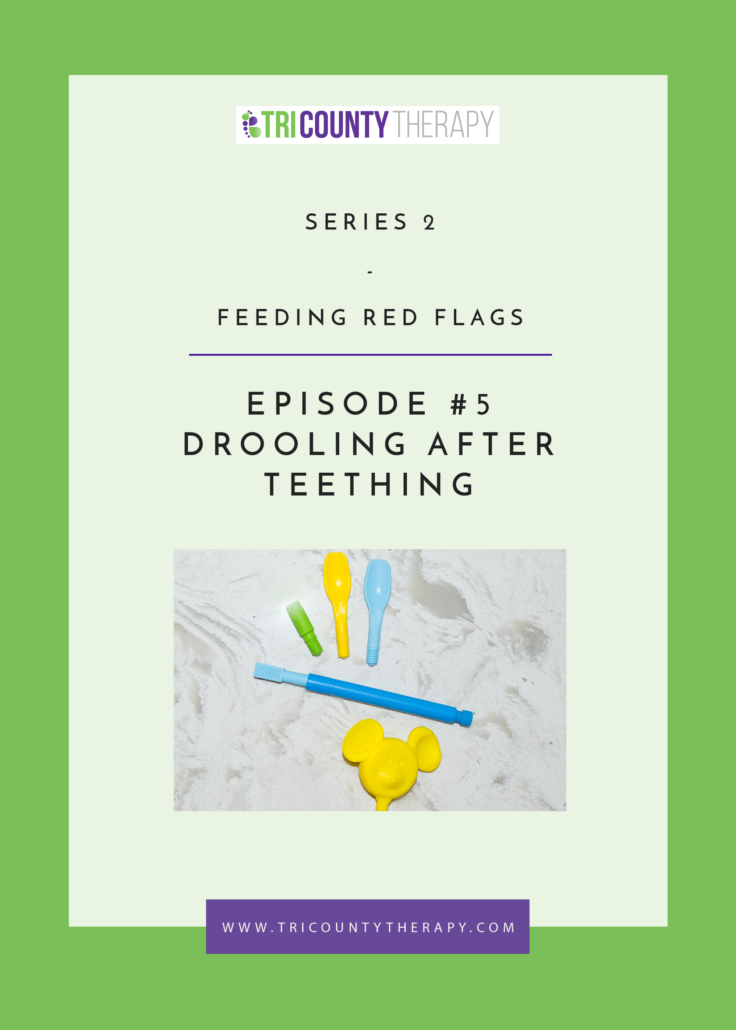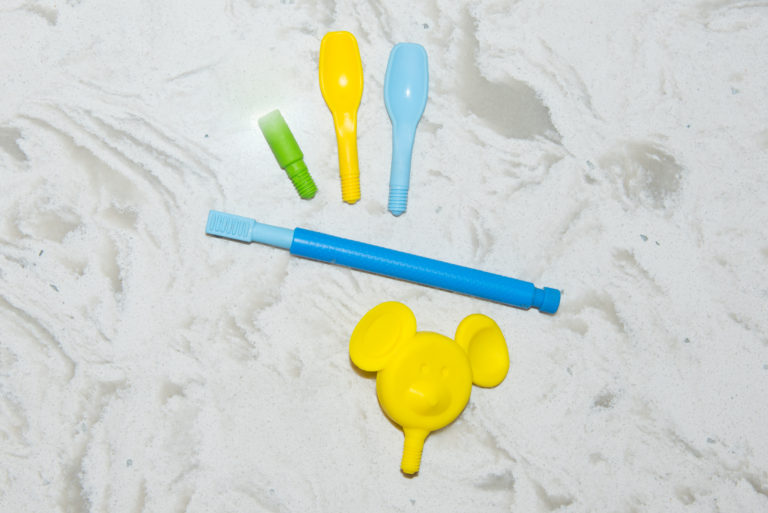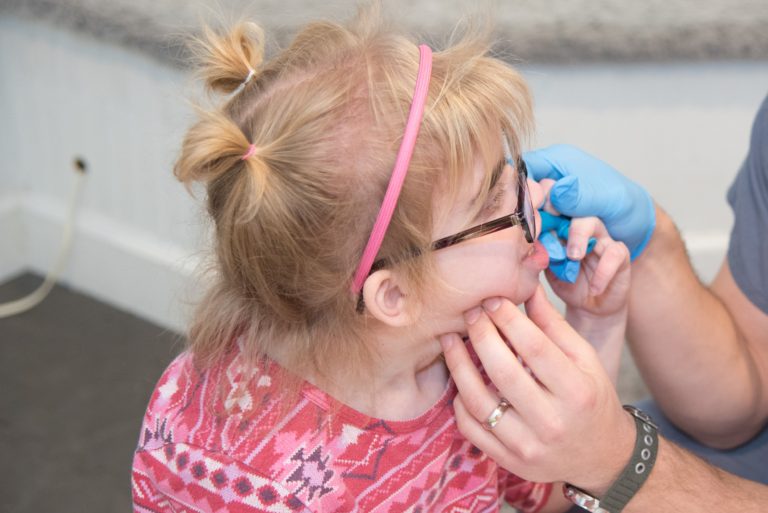Feeding Red Flags: Drooling After Teething

Drooling After Teething
What if your child is drooling beyond the typical age of teething (around 18 months-2 years)? Many children drool due to oral motor weaknesses or reduced awareness in their mouth. Some common causes of drooling are weak lips or jaw or difficulty keeping good lip closure. Here are some tips to decrease and manage drooling:
Tip #1- Set Your Child Up For Success!
Posture plays an important role by providing stability so that your child can control and ultimately improve his drooling. Make sure that while sitting (to eat, watch TV, play, etc.) your child’s trunk and head are supported and stable.

Tip #2- Increase Sensation
If your child’s lips are constantly open, allowing drool to pool and spill out of his mouth, it may be that he does not even realize it. For some children, calling attention to their open mouth by providing more sensory input can be very helpful. Try tapping/stroking his lips using firm pressure, using vibration (like a z-vibe or vibrating teether), or applying cold (like a frozen teether) to bring awareness of the lips and reduce drooling.

Tip #3: Increase Strength and Control
Increase lip, tongue, and jaw strength so that controlling drool will not feel like such as difficult task for your child. Some good exercises include using a straw to suck up thick liquids (like a milk shake or smoothie), practice licking foods (like peanut butter) off of his lips and squeezing items (like a z-vibe tip) between his lips, making sure to purse the lips without using teeth.

Be sure to talk with your SLP or OT if you are concerned with your child’s drooling, we have many more tools and strategies!
